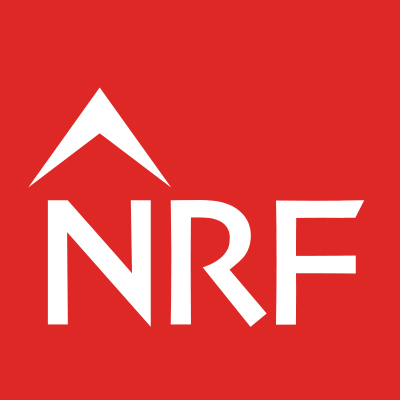A Conversation with M.H. Tse




By now, you have likely experienced the exhibition, Necessary Cruelty: The Legal Technology of Domestic Predation, presented by the Museum of Human Predation and displayed in the Bora Laskin Law Library. I had the privilege of learning about the exhibition from Man Ha (M.H.) Tse, one of its creators and the inaugural postdoctoral fellow in Animal Law at the University of Toronto.
Necessary Cruelty responds to the legal paradox that, while Canadian law prohibits unnecessary animal cruelty, it concurrently enables and justifies cruelty deemed necessary to inflict upon animals raised for consumption. The exhibition itself is an immersive expression of what M.H. describes as a “zone of necessity”—a discrete enclave where practices that are cruel in fact are not considered cruel in law. The zone is physically brought to life by occupying the enclosure-like contours of the library’s entrance.
During our tour, M.H. explained the intentionality behind the use of the library space and the various typographies in the exhibition. The large blocks of text displayed across the north-facing windows describe forms of animal cruelty that are permissible: “It will be lawful to immobilize you in metal chutes, boxes, headlocks, and headgates.” Its broad spatial coverage is evocative of vast exposure to harm. In the smaller, more confined spaces, statements articulate razor-sharp limits on cruelty in an otherwise broad and permissive legal regime. The warm-tinted background underlying the text contrasts with its chilling content, inviting feelings of dissonance.
The main text is written in Garamond, a typeface originating in the 16th century, reflecting the archaic and enduring nature of these laws. The smaller portion of text is set in Blackletter typeface, representing the sharp and precise contours of these narrow restrictions on harm. Both antique typefaces are juxtaposed with the exhibition’s title typeface: Franklin Gothic Ultra, a hyper-bold and dominating font which gained popularity during the post-World War II industrial era. The use of these different typefaces highlights the relationship between archaic (yet contemporary) practices and the modern impetus for mass consumption.
The physical objects placed throughout the exhibition are meant to be perceived as legal artifacts. M.H. explained that Necessary Cruelty represents a museum set in the future, displaying today’s practices as relics of what she describes to be our “violent past.” These legal artifacts include “Animal Protection Zone” signs, found in agricultural and industrial sites, which paradoxically mark spaces governed by special legal rules where animals are bred, processed, and slaughtered. The tools encased in the glass display box on the back wall of the exhibition are those used to facilitate mass animal consumption as efficiently as possible.
The exhibition is at once subtle and confrontational. Visitors could just as easily pause to deeply engage with it as they could find themselves absentmindedly studying within its boundaries, unaware of its embodied presence. M.H. explained that both are valid ways to interact with the exhibition: it is not intended to be coercive or impose a particular moral prerogative. Rather, it invites students, staff, and faculty to engage with real-world concepts – which may feel painful, uncomfortable, or inaccessible – at their own pace. The exhibition’s objective is to start a dialogue about the legal exceptionalism of our treatment of animals raised for consumption – a corner of the law that is only just emerging from the shadows yet is intimately connected to our everyday lives. By framing the exhibition as a future museum, M.H. and her collaborators have constructed an imaginative detachment that enables a more distanced perspective for those who may find these concepts distressing to confront in the present.
I had a thoughtful discussion with M.H. about how she hopes visitors will engage with the exhibition. She expressed that animal law has long been peripheralized and trivialized, and she seeks to bring this important area into the broader legal discourse. Indeed, the more exposure we have to contemporary animal law practices, the better we can come to our own conclusions about their ethical and legal legitimacy. While M.H. is not set on elevating a specific moral agenda, she hopes that viewers will consider how systems of “necessary cruelty” imposed upon animals connect to other forms of oppression and subjugation, such as colonial violence and environmental degradation. In her own powerful words:
“This way that we have of extracting, holding, keeping, and using life itself as this endless instrument of generation, it really has shaped the world on every level. It has shaped the surface of the planet. It has changed our ways of organizing territory.
And so, understanding the legal structure that we have created to enable this extractive relationship is really important – even if you don’t care about animals – to understand the sort of legal infrastructure for how we extract from others, humans and animals alike, and from the earth.”
Necessary Cruelty coincides with the establishment of the first Animal Law Program at the University of Toronto. However you choose to interact with the exhibition, it symbolizes an incremental yet significant step toward affirming animal law as a scholarly field deserving of centrality and critical engagement. The exhibition serves as both an important exposure to current animal law practices as well as a catalyst for imagining a better and more just future, where structural violence is a relic of the past.
Acknowledgments I would like to thank M.H., for her generosity and thoughtful conversation, and her collaborators: Rachel Wallace, Yshia Wallace, Anne Campbell, and Petrina Ng, for their artistic vision in bringing Necessary Cruelty to life. If you have not yet visited the exhibition, it remains open until November 21, 2025.






